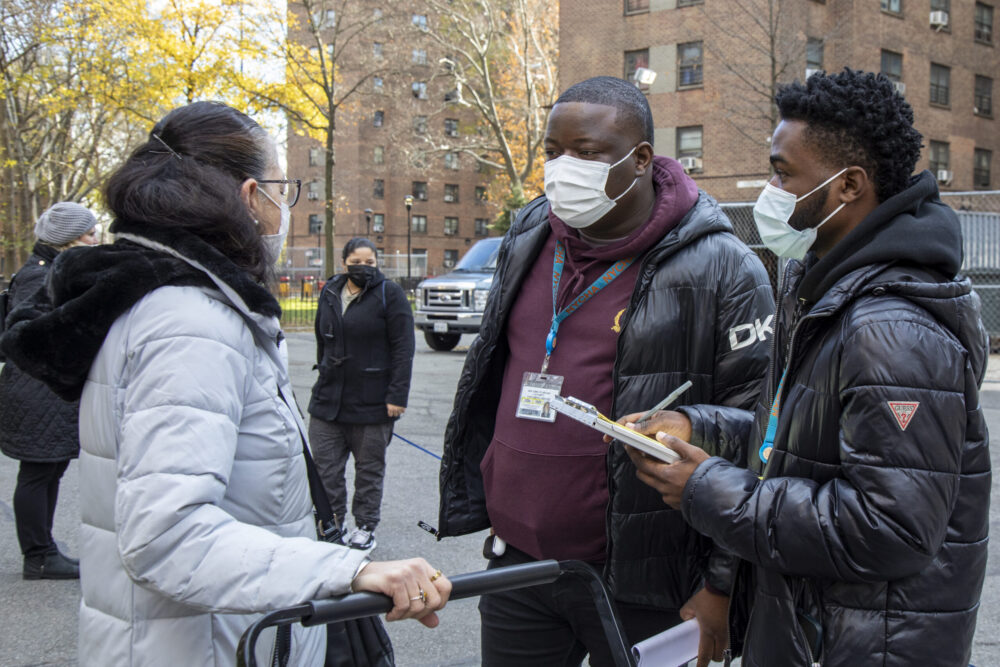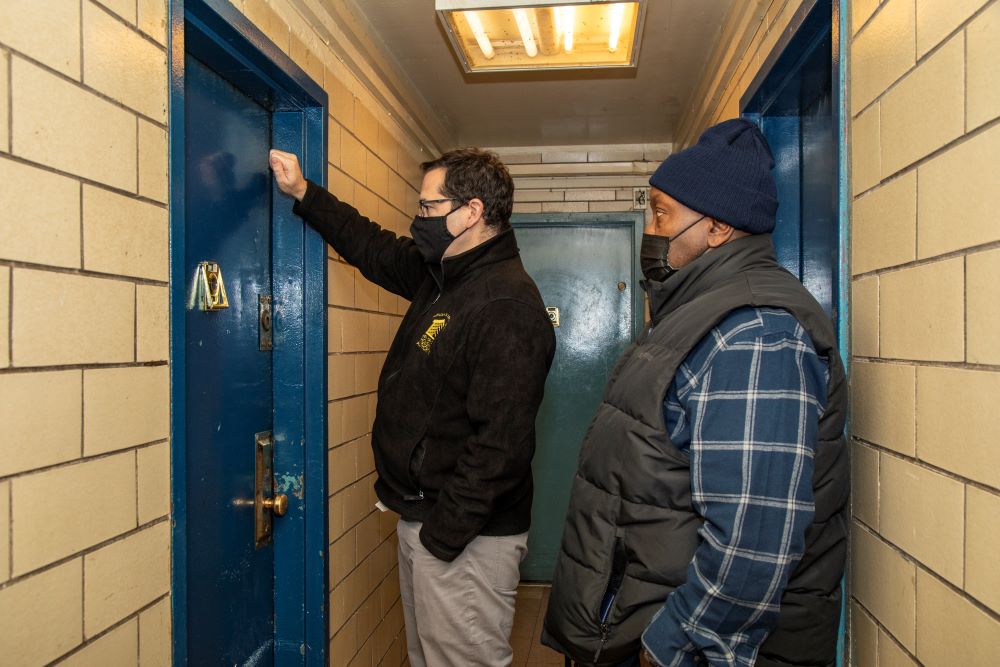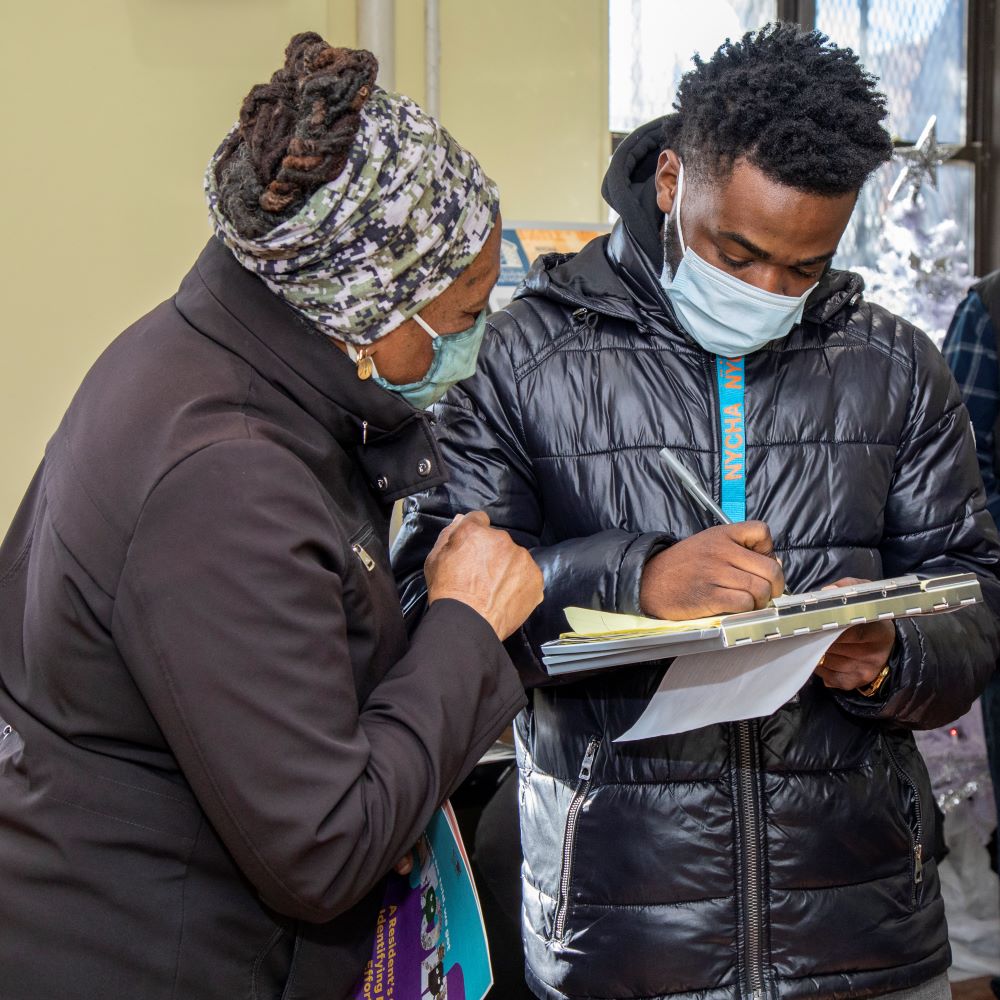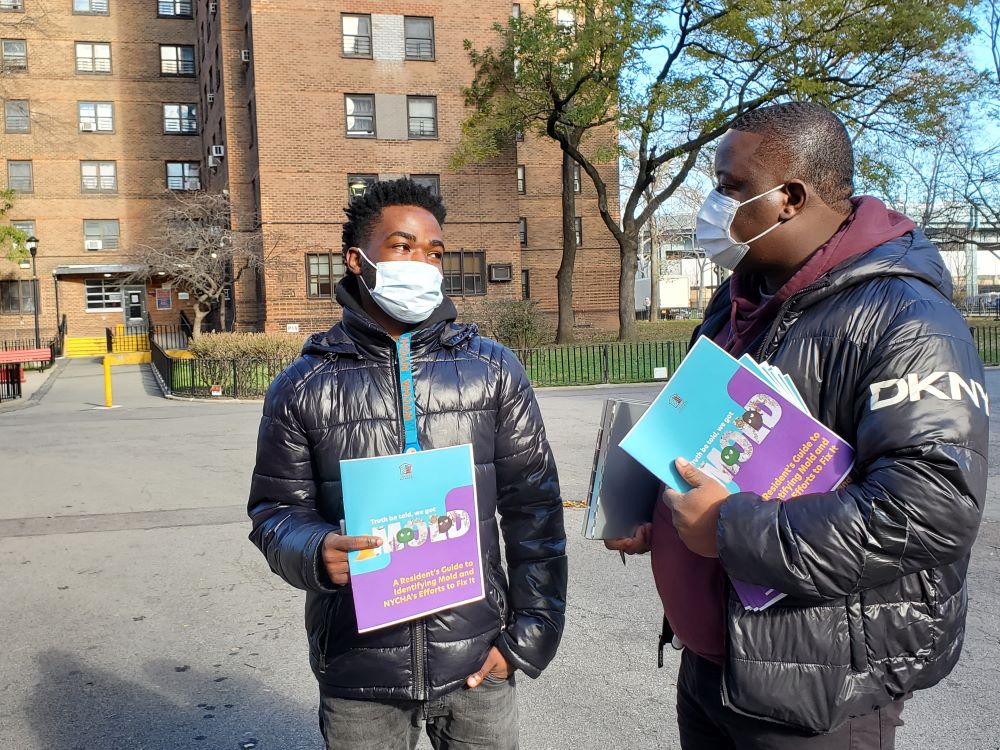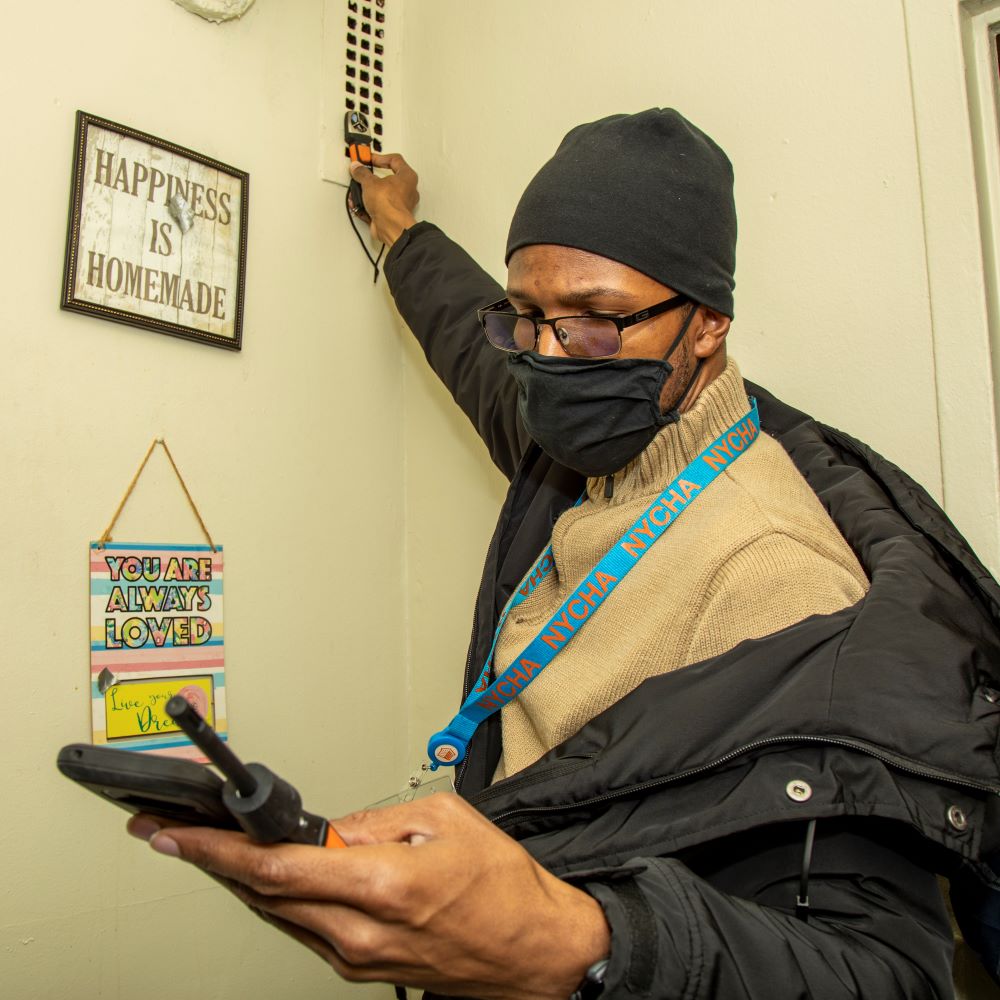Ensuring Safety at NYCHA Through Compliance Visits
Since January 2020, a team of NYCHA’s compliance, safety, and quality assurance experts have been making regular visits to NYCHA developments to inspect their buildings and grounds. Since the start of the program, 39 NYCHA developments have been inspected and assessed according to protocols.
NYCHA’s Environmental Health and Safety team checks for issues related to mold, heat and elevator service, fire safety, lead, pests, and employee safety. NYCHA’s Compliance Monitoring Unit interviews property management staff about their staffing levels, daily inspections, exterior lighting, waste management, and other areas of their work. The Quality Assurance team checks for maintenance and janitorial deficiencies in common areas and inspects building systems and exteriors.
Katie Gordon, Deputy Director of Compliance Monitoring, said that compliance visits give NYCHA a 360-degree view of the development: “Every six months, we compile a list of underperforming developments across the Authority. After selecting the highest risk developments, we start planning the visits. Two or three weeks in advance, we let the property management staff know that we are coming. At each development, we spend about a week. We do our inspections, identify deficiencies, and then work with the management to fix every deficiency.”
Typically, 250-300 deficiencies are found per visit. After the visiting week is over, NYCHA’s compliance staff continue meeting with property management every week to go over the work orders and see what was done.
“The ultimate goal is to do an in-depth assessment of the performance at the property level, share that info with the Chair and the Federal Monitor, and address the issues that we find,” noted Ms. Gordon. “We also interview the resident association presidents to find out the top concerns. Nearly every time, those concerns overlap with the deficiencies we find.”
Andrea Asprelli, Compliance Monitor and Reporting Specialist, said that some identified deficiencies have been around for a while, and that Compliance can assist property management staff who did not previously have the knowledge, resources, or interdepartmental coordination needed to resolve the issue.
“After the on-site monitoring, we track every deficiency through to completion,” said Ms. Asprelli. “After an item is fixed, we look for a work order and photo as evidence of a completed repair.”
Camille MacLean, Compliance Monitor and Reporting Specialist, noted that although they treat each development as an independent case, there are a lot of similarities among deficiencies found during on-site monitoring investigations: “We identify trends of long-standing issues that connect to various root causes, many of which are beyond development staff’s control. We establish working relationships with property management to discuss what roadblocks prohibit them from performing work in a timely manner.”
“The on-site monitoring exercise is an opportunity for development staff to voice their concerns,” Ms. MacLean added. “Even if we cannot directly provide the missing resources, we can certainly point them in the right direction.”
During the compliance visits, NYCHA also sets up a table where residents can provide their complaints and suggestions.
Ms. Gordon said that the teams performing the compliance visits have been to all large at-risk properties. In 2022, they’ll start returning to the same developments to see the progress.

